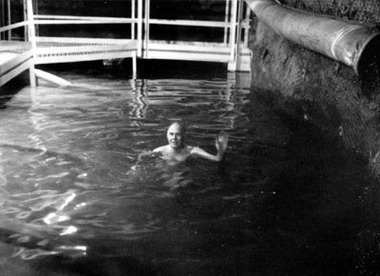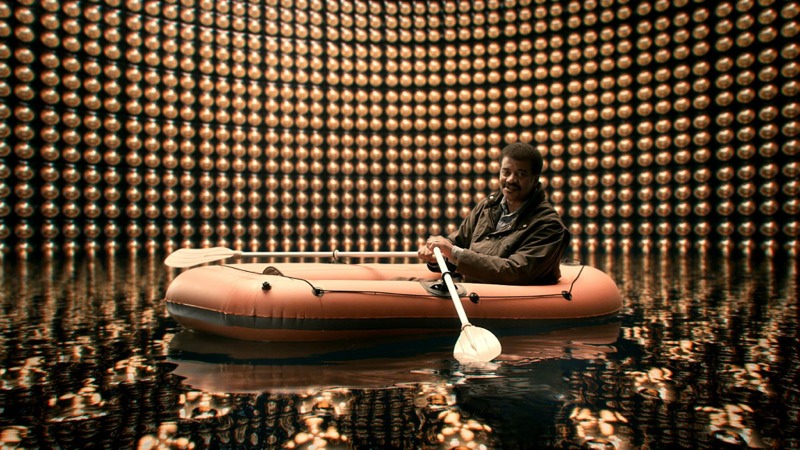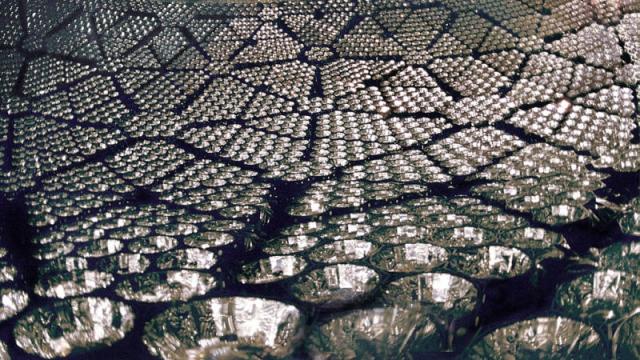Early this morning the world learned that the 2015 Nobel Prize in Physics has been awarded to Takaaki Kajita and Arthur B. McDonald for discovering that neutrinos can change from one type to another, evidence that — contrary to prior scientific consensus — they must have mass.
Just what are neutrinos? They are ultralight subatomic particles, and they have been behind two previous Nobel prizes in physics for good measure. That’s how interesting they are. The poet John Updike paid humorous tribute to their best-known properties in his 1959 poem “Cosmic Gall“:
Neutrinos they are very small
They have no charge and have no mass
And barely interact at all.
One of those three properties has since been proved incorrect.
Why do physicists care so much about neutrinos? For starters, solar neutrinos could shed light on the inner workings of our sun and other stars, because they don’t interact much with other particles as they travel from the sun’s core out into space. (Isaac Asimov dubbed them “ghost particles.”) So the information they carry is less warped by interference. Neutrinos may also provide clues about the nature of dark matter and dark energy — two of the biggest challenges facing physics in the 21st century.
However, for much of the 20th century, they were the source of one of the most frustrating puzzles in particle physics. The sun produces trillions of the little devils every day, yet experiment after experiment revealed far fewer solar neutrinos than physicists expected. The work that led to the solution of that puzzles behind this year’s Nobel Prize in Physics.
Birth of a Ghost Particle
Wolfgang Pauli first proposed the existence of an unseen particle in a 1930 letter to colleagues, trying to explain conservation of energy in a type of radioactive decay (beta decay) in atomic nuclei. (Energy appeared to be missing in some early experimental results, and he contended this was simply not possible. He was correct.) Addressing them as “Dear Radioactive Ladies and Gentlemen,” he suggested the culprit was a very light particle that carried away some of the energy. Enrico Fermi later dubbed it a “neutrino.”
Pauli thought such a particle might never be detected; he claimed he only proposed it in desperation to find a good theoretical explanation for the beta decay problem. It took 25 years to do so. In 1956 by Clyde Cowan and Frederick Reines observed the first neutrinos, thanks to the rise of nuclear power plants capable of generating the necessary fusion reactions to produce them. They sent Pauli a telegram about their discovery, to which Pauli replied, “Everything comes to him who knows how to wait.” More waiting lay ahead. It would be another 10 years still before anyone detected neutrinos that hailed from the sun.
Here’s the difficulty: neutrinos only interact with other particles via the weak nuclear force, which means the neutrinos have to be so close to the other particles as to nearly be touching their nuclei. That’s when the weak force kicks in. It’s what makes neutrinos so devilishly hard to detect.
That’s why physicists started building neutrino observatories underground, to avoid interference from things like cosmic rays hitting the Earth’s atmospheres. (“It’s ironic, in order to observe the sun you have to go kilometers under ground,” newly crowned Nobel Laureate McDonald said in an interview early this morning.) They buried huge tanks of liquid in the earth, to increase the likelihood that a neutrino travelling to earth from the sun would strike one of the atoms in the fluid. This would initiative a decay process, changing the atom into a different chemical element. When that happened, an electron would be released, which could be easily detected. It was still like trying to find one particular grain of sand in the Sahara, but physicists are plucky that way.
The Case of the Missing Solar Neutrinos

It was a physicist named Ray Davis Jr. who built the first underground neutrino observatory in 1967, in an abandoned mine in South Dakota called Homestake. (That’s Davis in the photo at right, taking a refreshing dip underground.) He filled his tank with 600 tons of dry-cleaning fluid, and waited for a neutrino to collide with one of the chlorine atoms, thereby changing it into an argon atom. And it worked! Davis was the first to detect solar neutrinos, snagging himself a Nobel Prize (shared with Masatoshi Koshiba and Riccardo Giacconi in 2002) in the bargain.
There was just one problem. Homestake should have detected around one neutrino per day, per the theoretical calculations, but Davis only detected one neutrino every three days. Two-thirds of the expected solar neutrinos were missing. Physicists battled over why this was so for the next three decades.
A vital clue appeared in 1962, when physicists discovered there was a second type (or flavour) of neutrino, the muon neutrino. This was so surprising that I.I. Rabi famously exclaimed, “Who ordered that?” A third type of neutrino, the tau neutrino, wasn’t directly observed until 2000, although its existence had long been suspected (since 1975).
And therein lay the key to solving the case of the missing solar neutrinos. What if neutrinos could change their flavours? That hypothesis turned out to be right.
Quick-Change Artists of the Cosmos
Housed deep underground in a former zinc mine, it was Japan’s Super-Kamiokande collaboration — led by Kajita — that uncovered the first hint that neutrinos could oscillate (change flavour) in 1998. But their detectors couldn’t detect that switch directly.
That’s where the folks at Sudbury came in, led by McDonald. The sun only produces one type of neutrino (electron, or solar neutrinos), and most detectors looked just for those. Sudbury designed its detector to hunt for the other flavours as well, by spiking their heavy water with extra salt when they wanted to detect tau or muon neutrinos. They added up all three flavours of neutrinos they detected and voila — that number exactly matched the theoretical predictions for how many solar neutrinos there should be. Something was happening to the solar neutrinos on their way to earth from the sun.

In 2002, the folks at Sudbury announced that they had “found” the missing neutrinos. It turns out the solar neutrinos weren’t missing at all; they were just in disguise, changing flavours as they travelled from the Sun to the Earth, thereby escaping detection for decades. I like to compare the different flavours of neutrinos to piano string, which are tuned to different notes, e.g., G. B and C. But just because a neutrino is born a “G”, that doesn’t mean it stays a G forever. Neutrinos can “de-tune” over time, such that a G gradually becomes a B or a C.
This is really, really important, because if neutrinos can change flavour — or “oscillate,” in physics parlance — that means they must have some tiny bit of mass. And that contradicts the Standard Model of particle physics. (That doesn’t mean the model is wrong and should be discarded, just that it’s incomplete. It doesn’t account for gravity or dark matter either.)
Why is mass to blame? Well, it’s complicated. But back in 2007, I was present at a demo by physicist Janet Conrad, who explained how mass could de-tune neutrinos with the help of a couple of simple tuning forks. The forks were tuned to the same frequency, except she stuck a tiny bit of mass to one of the forks. She struck one fork, then the other, and a “wah-wah-wah” sound rang through the room.
Conrad explained that like most subatomic particles, neutrinos have both particle and wavelike natures. Waves oscillate back and forth and can combine in interesting ways. Play two very similar notes together, and you’ll get an interference effect: the sound will wobble between loud and soft. Neutrinos oscillate in the same way. Their waves combine in different ways as they travel through space, and it is those minuscule differences in their masses that gives rise to telltale interference effects, causing a flavour change over time.
Since then, more and more evidence has come in that neutron oscillation is a very real phenomenon. In 2010, scientist with the OPERA experiment at Gran Sasso national Laboratory found four tau neutrinos in a stream of billions of muon neutrinos generated at the nary CERN laboratory — they had clearly changed flavours en route. And in 2011, the Japanese Tokai to Kamioka (T2K) experiment found the first evidence of muon neutrinos turning into electron neutrinos on their journey between the two laboratories.
Neutrinos continue to surprise us, even now. Chances are this won’t be their last Nobel win.
References:
Fukuda, Y. et al. (1998) “Evidence for Oscillation of Atmospheric Neutrinos,” Physical Review Letters 81:1562. (Super-Kamiokande collaboration)
Ahmad, Q.R. et al. (2001) “Measurement of the rate of v+d -> p+p+e interactions produced by 8 solar neutrinos at the Sudbury Neutrino Observatory,” Physical Review Letters 87: 071301. (Sudbury collaboration)
Ahmad, Q.R. et al. (2002) “Direct evidence for neutrino flavour transformation from neutral-current interactions in the Sudbury Neutrino Observatory,” Physical Review Letters 89:011301.
Jayawardhana, R. Neutrino Hunters: The Thrilling Chase for a Ghostly Particle to Unlock the Secrets of the Universe. New York: Scientific American/Farrar, Straus and Girous, 2013.
